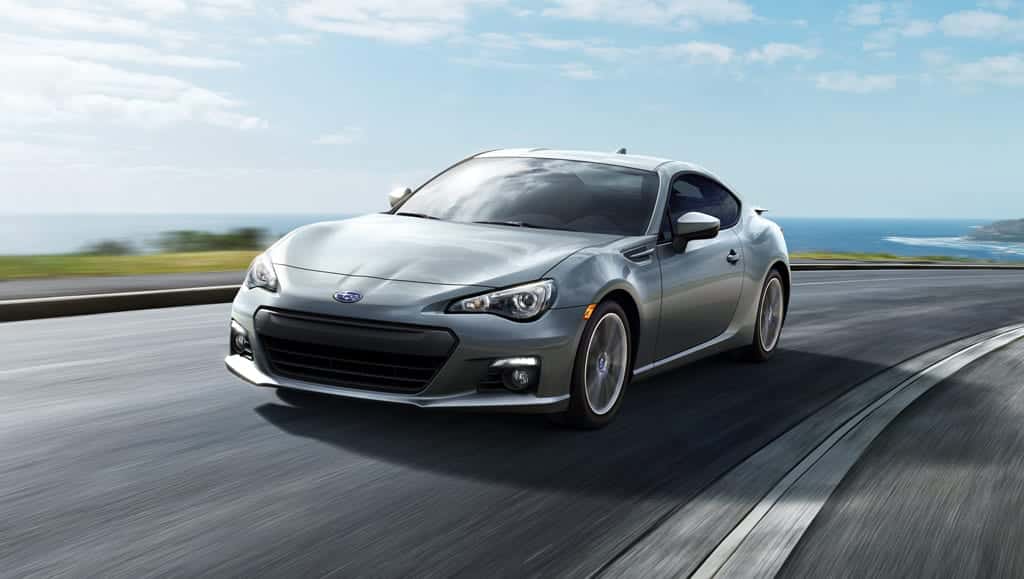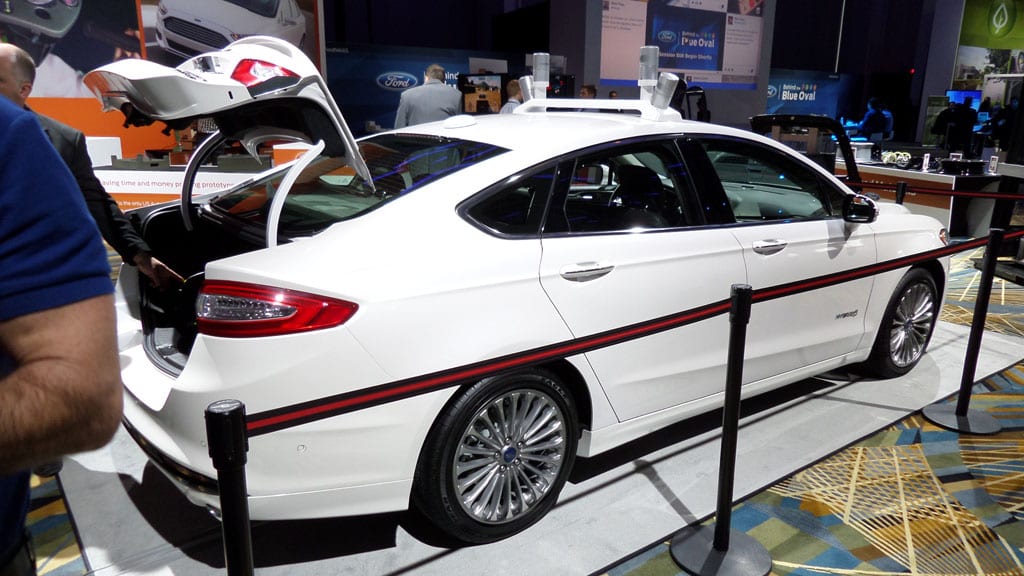I’m sure that many people would love to have a fast car that won’t rack up an enormous fuel bill or cause even more emissions. The list below consists of the most fuel-efficient sports cars I could find.
- Tesla Model S.
- 2015 Mini Coupe.
- 2015 Hyundai Veloster.
- 2015 Subaru BRZ.
- 2015 Porsche Boxter.
- 2015 Lotus Elise.
Tesla Model S
Price range: $71,070 USD for the 60 kWh model to $105,670 USD for the P85D 85 kWh model without customization.
Efficiency: 89 MPGe (the ‘e’ means equivalent).
Estimated average electricity cost: $14 per month at an electricity rate of $0.12/kWh, or $0 if you use the Tesla Supercharger stations (400 miles per month).
Range per charge: 208 miles (EPA rating), or 215 miles at 65 mph.

Image Credit: Kompulsa.
The Tesla Model S has a steep price range, however it is a full-sized sports car (which can comfortably seat 5,but a maximum of 7) which can accelerate from 0 to 60 MPH in a neck-breaking 3.2 seconds if the flagship P85D Performance model is chosen, and it will do so in a decent 5.9 seconds if you choose the cheapest 60 kWh model for $71,070.
Top speed doesn’t matter unless you are racing off the street due to the fact that speed limits are well below the top speed of all Tesla vehicles, but if you’re curious, the 60 kWh model has a top speed of 120 mph, and the flagship P85D Performance has a top speed of 155 mph.
I know that you’re concerned about the battery, but don’t worry, the vehicle comes with an 8-year, 125,000 mile drive unit and battery warranty. Electric vehicles don’t rely on the same unreliable batteries that cellphones do.
Where charging is concerned, this is the best electric vehicle to buy at the moment, because it is backed by a large network of solar-powered Supercharger stations in both the U.S. and Norway which will allow you to charge your vehicle for free in only 20 minutes. The network is large enough to enable you to travel across the United States or Norway. Supercharging is option for the 60 kWh Model S, and is already included with the 85 kWh model.
2015 Mini Coupe
Starting price: $22,000 USD.
Fuel efficiency: 26 MPG city, 35 MPG highway using the manual transmission, and 25 MPG city, 34 MPG highway using the automatic transmission, according to Edmunds.
Estimated average fuel cost: $55 USD per month (400 miles per month).

Mini is now owned by BMW AG (since 1994, actually), a manufacturer of luxury sports cars. This isn’t necessarily why today’s Mini Coupe is quick, but it happens to achieve a fun 0-60 MPH acceleration time of 6.5 seconds using the manual transmission, and 6.7 seconds using the automatic transmission.
Mini doesn’t just make cheap cars anymore, but they are still compact and fuel-efficient.
2015 Hyundai Veloster
Starting price: $18,000 USD.
Fuel efficiency: 27 MPG city/36 MPG highway.
Estimated average fuel cost: $53 USD per month (400 miles per month).

Image obtained with thanks from Hyundai.
The Hyundai Veloster (I wonder if this name was derived from ‘velocity’) is one of the most affordable sports cars on the market. It efficiently utilizes its little 138 HP engine to accelerate from 0-60 MPH in 7.1 seconds. It only has two doors (which is common for sports cars), but it has a hatchback-like rear which is great for carrying small appliances.
It isn’t terribly fast, but it packs a punch in the economy car price range at $18,000.
Other features include:
- 17-inch alloy wheels.
- Daytime Running Lights (DRL).
- Illuminated vanity mirrors.
- Driver’s blind spot mirror.
- Dual centered chrome-tipped exhaust outlets.
Source: Hyundai.
2015 Subaru BRZ
Starting price: $26,490 USD.
Fuel efficiency: 25 MPG city/34 MPG highway. 28 Combined.
Estimated average fuel cost: $57 USD per month (400 miles per month).

If you like RWD cars, you should take a look at the 2015 Subaru BRZ. Its 200 HP, 2.0 litre engine launches it from 0-60 MPH in 6.4 seconds, which is a delight for the average person. It has both a manual and automatic transmission option if you want to utilize the performance capabilities of the manual transmission, or relax and focus on the road using the automatic one.
In Car and Driver’s review of the Subaru BRZ, the writers touted its ‘sharp steering’ and terrific chassis balance. This likely translates to a nice driving experience. Everyone appreciates good handling!
Please note that the 2.0 litre rating is just the volume of the cylinders, and is not a reliable performance metric. This is why I provide acceleration times.
2015 Porsche Boxter
Starting price: $51,400 USD.
Fuel efficiency: 8.4 L/100 km or 28 MPG combined.
CO2 emissions: 195 g/km.
Estimated average fuel cost: $57 per month (400 miles per month).

The Porsche Boxter is not cheap. However, like the Tesla Model S, it is so efficient compared to the other sports cars in its class that it deserves a place on this list as well. It can accelerate from 0-60 MPH in 5.8 seconds, and it has a top speed of 162 MPH.
It achieves this performance and efficiency using a 265 HP (195 kW) engine. Take this convertible across the entire continental United States for only $357 USD! That’s cheaper than some flights.
2015 Lotus Elise
Fuel efficiency: Up to 45 MPG/6.3 L/100 km combined.
Estimated average fuel cost: $36 USD per month (400 miles per month).

Don’t be deceived by the engine’s 134 HP, it can accelerate from 0-60 MPH in a brisk 6 seconds. Highly efficient body designs deliver great fuel economy and performance.
Colin Chapman constructed a series of aerodynamically advanced, lightweight sports racing cars during the 1950s – typified by the Lotus Eleven that won its class at Le Mans in 1957. Often quoted, though still as valid today as when he first uttered the words at the launch of the Lotus Seven in 1957, Chapman’s ethos was: ‘to increase performance, add lightness.’
His engineering ideals endure in the Lotus Elise, with few cars rivalling its tactile agility. A mid-engined, rear-wheel drive with responsive lightweight chassis, combine to deliver the ultimate driving sensation, focussed on providing phenomenal feedback with surefooted handling. A reputation as a true driver’s car combined with low CO2 emissions mean the Elise is the perfect sports car for today’s roads.
To increase performance, add lightness! That means a lot, considering today’s high fuel prices. The old philosophy of adding more horsepower is not cutting it. Sports car sales are suffering because of their poor fuel efficiency. Lightweight designs avoid that problem.









